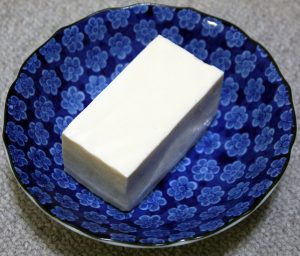Sugar, flour, milk, eggs…these are common ingredients for a cake. However, there are all sorts of things you can put in a cake. Sometimes, you can’t tell the difference between a “normal” cake and a unique one. Many unusual cake ingredients have their origins during lean times like the Great Depression. Without access to a lot of the usual dessert staples, people had to get creative. Other times, companies are trying to promote their products. Whatever the reason, using unusual cake ingredients has a long history. Here are some examples:
Mayonnaise
In the Great Depression, ingredients like eggs, oil, and dairy were hard to come by. Unusual cake ingredients tend to replace these staples. To keep cakes moist, people used mayonnaise. Picking up on the trend, brands would put recipes on their labels. Considering that mayo is made from eggs, oil, and vinegar, it isn’t that odd that it works in a cake. Most of the recipes you’ll find today are for chocolate mayonnaise cake, which is still pretty popular in the southern United States. Fans say that the mayo adds a lot of moisture into the cake.
Tomato soup
Back in the 1920s and 1930s, you could find recipes for a spice cake with a “mystery” ingredient. It was tomato soup, which replaced nearly all the dairy in the cake. Campbell’s Soup realized that people were using their product, so developed their first official cake recipe in 1940. It was less of a “cake” as we know it and more of a steamed pudding. Modern recipes for tomato soup cake include dairy and eggs, as well as raisins, warm spices, and often cream-cheese frosting.
Sauerkraut
Looking to make a German chocolate cake but you don’t have coconut? Use sauerkraut instead! There doesn’t seem to be a definitive origin for this unusual ingredient. One source said it was created for a sauerkraut festival. Wherever it came from, it’s definitely vintage. The secret is to rinse the sauerkraut really well to get rid of the powerful pickled taste. On its own, the cabbage doesn’t have a strong flavor. It adds a coconut-like texture and moisture.
Beans
If you’re gluten-free, you can substitute flour with canned beans. Because of their very mild flavor, they can be disguised in basically any kind of cake. Black beans have a stronger flavor, so they work best in chocolate cakes. They’re also good in brownies. For one cup of flour, use one cup of beans and add two tablespoons of fat to the existing recipe. Always rinse and drain the beans, too.
Jello packets
Poke cakes were very popular in the 1970s when people were buying up boxed cake mixes and Jello packets. You could make all kinds of fruity-flavored cakes without real fruit! You prepare a cake mix according to the instructions and then poke holes into the top. After dissolving the dry jello in water, you pour the mixture over the cake. It sinks into the holes, adding flavor, moisture, and color. While love for poke cakes has faded, recipes are still around because they’re so easy to make.
 Tofu
Tofu
Considering tofu’s naturally bland and creamy texture, it makes sense it works as one of our unusual cake ingredients. It essentially takes on the flavor of whatever is around it. It’s frequently used for vegan recipes that can’t use eggs, but need a binder. The tofu is pureed and mixed into the batter. You can also find cake frosting recipes that use tofu.
———-
If you would rather not try putting mayonnaise in your dessert, what about alcohol?





